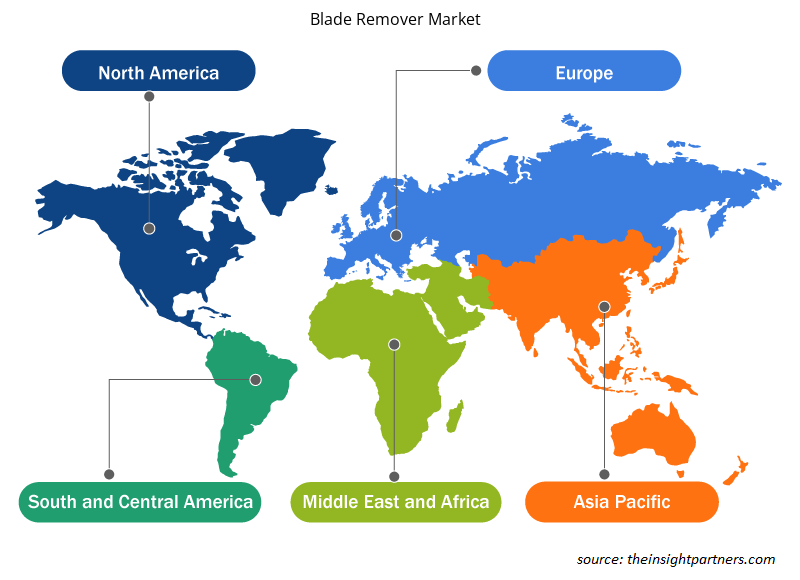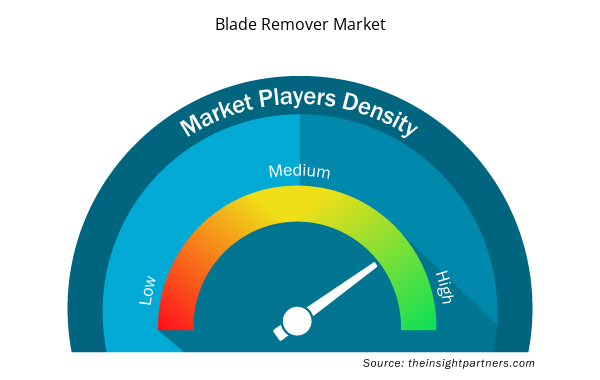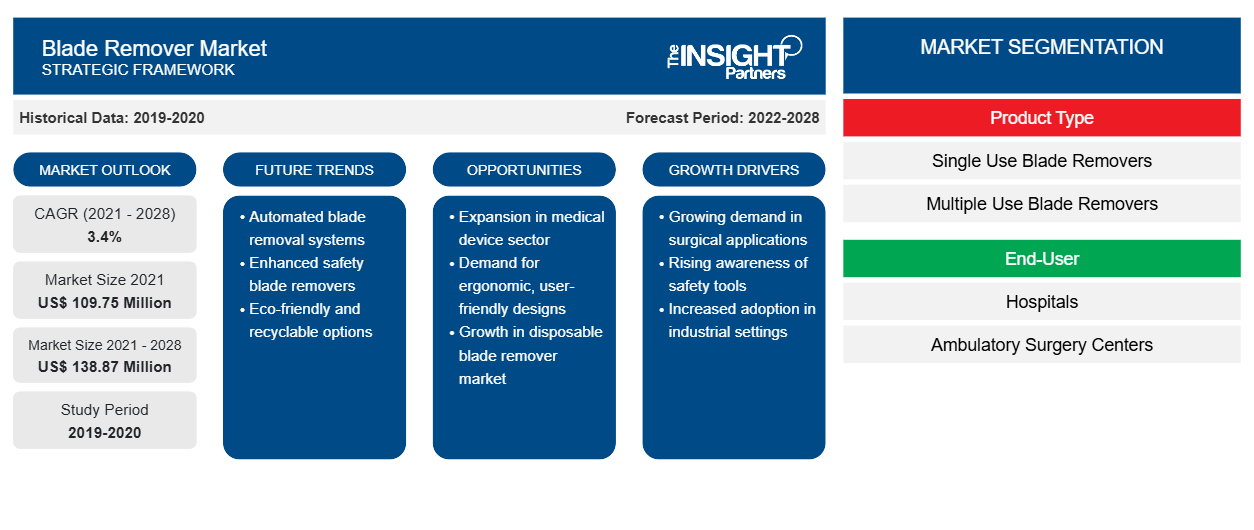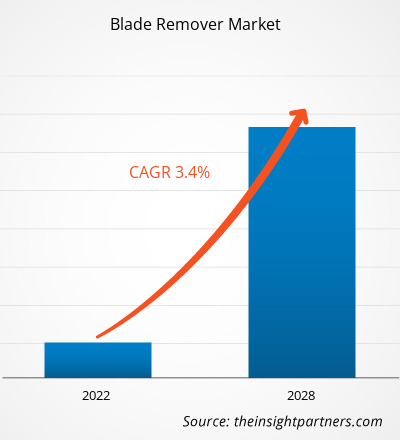刀片拆卸器市场规模预计将从 2021 年的 109,750.48 万美元增至 2028 年的 138,872.23 万美元;预计 2021 年至 2028 年期间的复合年增长率为 3.4%。
刀片拆卸器可安全简单地拆卸任何类型和尺寸的手术刀柄的旧一次性刀片。另一方面,仅在美国,装卸刀片时就会发生 20 起伤害,其中 95% 的伤害与锋利的工具有关,而 90% 的伤害涉及受污染的刀片。除此之外,刀片拆卸仅需要直线进出运动。因此,拆卸器使用简单,并且在外科医生或助手使用的情况下,刀片拆卸操作不会分散外科医生或助手对正在进行的过程的注意力。
定制此报告以满足您的需求
您可以免费定制任何报告,包括本报告的部分内容、国家级分析、Excel 数据包,以及为初创企业和大学提供优惠和折扣
- 获取此报告的关键市场趋势。这个免费样品将包括数据分析,从市场趋势到估计和预测。
刀片拆卸器市场的增长归因于单手操作的增加以及受伤率的增加。然而,刀片拆卸器固有的问题阻碍了市场的增长。
市场洞察
伤害发生率增加
用镊子或手指取下刀片并不安全。这会增加割伤和感染 HIV、乙肝和丙肝等血液传播疾病的可能性。更糟糕的是,如果用镊子取下刀片时用力过大,刀片可能会滑落并弹出超出正常范围,刺伤附近的同事。这会导致受伤。如果有人的血液污染了该工具,风险就会增加。这可能导致经皮接触血液传播病原体。在欧盟/欧洲经济区 (EU/EEA),约有 900 万人长期感染乙肝病毒 (HBV) 或丙肝病毒 (HCV),另有未知数量的未确诊病例。这种风险也会影响患者。手术人员的经皮损伤对患者构成共同风险,有可能在医生和患者之间传播感染。移除装置旨在保护用户和下游人员在从可重复使用的手柄上取下手术刀刀片时免受意外伤害。
基于产品类型的洞察
根据产品类型,全球刀片拆卸器市场细分为一次性刀片拆卸器和多次使用刀片拆卸器。一次性刀片拆卸器细分市场在 2021 年占据了最大的市场份额,预计在预测期内将实现 3.5% 的最高复合年增长率。刀片拆卸器可以安全地从金属手术刀柄上取下刀片,同时将它们存放在铰链式塑料盒中,该塑料盒将刀片牢固地锁定在适当位置,以便于在锐器容器中轻松处理。这种一次性设备可与所有手术刀刀片和手柄配合使用,以防止锐器伤害。
刀片拆卸器市场区域洞察
Insight Partners 的分析师已详细解释了预测期内影响刀片拆卸器市场的区域趋势和因素。本节还讨论了北美、欧洲、亚太地区、中东和非洲以及南美和中美洲的刀片拆卸器市场细分和地理位置。

- 获取刀片拆卸器市场的区域特定数据
刀片拆卸器市场报告范围
| 报告属性 | 细节 |
|---|---|
| 2021 年市场规模 | 1.0975亿美元 |
| 2028 年市场规模 | 1.3887亿美元 |
| 全球复合年增长率(2021 - 2028) | 3.4% |
| 史料 | 2019-2020 |
| 预测期 | 2022-2028 |
| 涵盖的领域 | 按产品类型
|
| 覆盖地区和国家 | 北美
|
| 市场领导者和主要公司简介 |
|
刀片拆卸器市场参与者密度:了解其对业务动态的影响
刀片拆卸器市场正在快速增长,这得益于最终用户需求的不断增长,这些需求源于消费者偏好的不断变化、技术进步以及对产品优势的认识不断提高等因素。随着需求的增加,企业正在扩大其产品范围,进行创新以满足消费者的需求,并利用新兴趋势,从而进一步推动市场增长。
市场参与者密度是指在特定市场或行业内运营的企业或公司的分布情况。它表明在给定市场空间中,相对于其规模或总市场价值,有多少竞争对手(市场参与者)存在。
在刀片拆卸器市场运营的主要公司有:
- 斯旺莫顿有限公司
- 阿斯彭外科
- 辛辛那提外科公司
- Sklar 手术器械
- 精细科学工具有限公司
免责声明:上面列出的公司没有按照任何特定顺序排列。

- 获取刀片拆卸器市场顶级关键参与者概述
最终用户/基于应用程序的洞察
根据最终用户/应用,全球刀片拆卸器市场细分为医院、门诊手术中心和其他。医院部门在 2021 年占据了最大的市场份额,预计在预测期内将录得市场最高复合年增长率 3.9%。
产品发布和审批是公司扩大全球业务和产品组合的常用策略。此外,刀片拆卸器市场参与者专注于合作战略来扩大客户群,这反过来又使他们能够在全球范围内保持自己的品牌名称。
公司简介
- 斯旺莫顿有限公司
- 阿斯彭外科
- 辛辛那提外科公司
- Sklar 手术器械
- 精细科学工具公司
- 癌症诊断公司
- Deroyal 工业公司
- 莫尔泰克制造公司
- Hu-Friedy MFG. CO., LLC.
- 瑞贝尔国际有限公司
- 历史分析(2 年)、基准年、预测(7 年)及复合年增长率
- PEST 和 SWOT 分析
- 市场规模价值/数量 - 全球、区域、国家
- 行业和竞争格局
- Excel 数据集



Report Coverage
Revenue forecast, Company Analysis, Industry landscape, Growth factors, and Trends

Segment Covered
This text is related
to segments covered.

Regional Scope
North America, Europe, Asia Pacific, Middle East & Africa, South & Central America

Country Scope
This text is related
to country scope.
常见问题
Blade remover market is segmented by geography into North America, Europe, Asia Pacific, Middle East & Africa, and South and Central America. North America held the largest market share for blade remover in 2021. The United States held the largest market in North America for blade remover, and the market is expected to grow due to rise in awareness among people about the importance and usage of blade remover, increasing adoption of technological advancements. Also, the regulatory scenario for the global blade remover market in North America has improved due to advancements in elective surgeries, increased awareness about sharp injuries. However, Asia Pacific registered as the fastest-growing region in the global blade remover market. The market is driven by growing investments from international players in China and India. The Asia Pacific, companies are focusing on widening product portfolio, diversified business operations, lower costs, and user satisfaction.
The blade remover market majorly consists of the players such Swann-Morton Limited, Aspen Surgical, Cincinnati Surgical Company Inc, Sklar Surgical Instruments, Fine Science Tools Inc., Cancer Diagnostics Inc., Deroyal Industries, Inc., Mortech Manufacturing, Hu-Friedy MFG. CO., LLC., and Ribbel International Limited among others.
Blade remover withdraws the safe and simple removal of used disposable blades of any kind and size of scalpel handle. The blade removal requires only straight-line in-out movement. Therefore, the blade remover is simple to use, and in the case of use by a surgeon or an assistant, the blade removal operation does not distract them from the process that is in progress.
Key factors that are driving the growth of the blade remover market over years are the rising single-handed operations and increase in incidence of injuries.
The single use blade remover segment dominated the blade remover market and held the largest market share of 87.17% in 2021.
The hospitals segment dominated the blade remover market and accounted for the largest revenue share of 62.09% in 2021.
Trends and growth analysis reports related to Life Sciences : READ MORE..
The List of Companies - Blade Remover Market
- Swann Morton Limited
- Aspen Surgical
- Cincinnati Surgical Company Inc.
- Sklar Surgical Instruments
- Fine Science Tools, Inc.
- Cancer Diagnostics, Inc.
- DeRoyal Industries, Inc.
- Hu-Friedy Mfg. Co., LLC.
- Ribbel International Limited
- Mortech Manufacturing
The Insight Partners performs research in 4 major stages: Data Collection & Secondary Research, Primary Research, Data Analysis and Data Triangulation & Final Review.
- Data Collection and Secondary Research:
As a market research and consulting firm operating from a decade, we have published and advised several client across the globe. First step for any study will start with an assessment of currently available data and insights from existing reports. Further, historical and current market information is collected from Investor Presentations, Annual Reports, SEC Filings, etc., and other information related to company’s performance and market positioning are gathered from Paid Databases (Factiva, Hoovers, and Reuters) and various other publications available in public domain.
Several associations trade associates, technical forums, institutes, societies and organization are accessed to gain technical as well as market related insights through their publications such as research papers, blogs and press releases related to the studies are referred to get cues about the market. Further, white papers, journals, magazines, and other news articles published in last 3 years are scrutinized and analyzed to understand the current market trends.
- Primary Research:
The primarily interview analysis comprise of data obtained from industry participants interview and answers to survey questions gathered by in-house primary team.
For primary research, interviews are conducted with industry experts/CEOs/Marketing Managers/VPs/Subject Matter Experts from both demand and supply side to get a 360-degree view of the market. The primary team conducts several interviews based on the complexity of the markets to understand the various market trends and dynamics which makes research more credible and precise.
A typical research interview fulfils the following functions:
- Provides first-hand information on the market size, market trends, growth trends, competitive landscape, and outlook
- Validates and strengthens in-house secondary research findings
- Develops the analysis team’s expertise and market understanding
Primary research involves email interactions and telephone interviews for each market, category, segment, and sub-segment across geographies. The participants who typically take part in such a process include, but are not limited to:
- Industry participants: VPs, business development managers, market intelligence managers and national sales managers
- Outside experts: Valuation experts, research analysts and key opinion leaders specializing in the electronics and semiconductor industry.
Below is the breakup of our primary respondents by company, designation, and region:

Once we receive the confirmation from primary research sources or primary respondents, we finalize the base year market estimation and forecast the data as per the macroeconomic and microeconomic factors assessed during data collection.
- Data Analysis:
Once data is validated through both secondary as well as primary respondents, we finalize the market estimations by hypothesis formulation and factor analysis at regional and country level.
- Macro-Economic Factor Analysis:
We analyse macroeconomic indicators such the gross domestic product (GDP), increase in the demand for goods and services across industries, technological advancement, regional economic growth, governmental policies, the influence of COVID-19, PEST analysis, and other aspects. This analysis aids in setting benchmarks for various nations/regions and approximating market splits. Additionally, the general trend of the aforementioned components aid in determining the market's development possibilities.
- Country Level Data:
Various factors that are especially aligned to the country are taken into account to determine the market size for a certain area and country, including the presence of vendors, such as headquarters and offices, the country's GDP, demand patterns, and industry growth. To comprehend the market dynamics for the nation, a number of growth variables, inhibitors, application areas, and current market trends are researched. The aforementioned elements aid in determining the country's overall market's growth potential.
- Company Profile:
The “Table of Contents” is formulated by listing and analyzing more than 25 - 30 companies operating in the market ecosystem across geographies. However, we profile only 10 companies as a standard practice in our syndicate reports. These 10 companies comprise leading, emerging, and regional players. Nonetheless, our analysis is not restricted to the 10 listed companies, we also analyze other companies present in the market to develop a holistic view and understand the prevailing trends. The “Company Profiles” section in the report covers key facts, business description, products & services, financial information, SWOT analysis, and key developments. The financial information presented is extracted from the annual reports and official documents of the publicly listed companies. Upon collecting the information for the sections of respective companies, we verify them via various primary sources and then compile the data in respective company profiles. The company level information helps us in deriving the base number as well as in forecasting the market size.
- Developing Base Number:
Aggregation of sales statistics (2020-2022) and macro-economic factor, and other secondary and primary research insights are utilized to arrive at base number and related market shares for 2022. The data gaps are identified in this step and relevant market data is analyzed, collected from paid primary interviews or databases. On finalizing the base year market size, forecasts are developed on the basis of macro-economic, industry and market growth factors and company level analysis.
- Data Triangulation and Final Review:
The market findings and base year market size calculations are validated from supply as well as demand side. Demand side validations are based on macro-economic factor analysis and benchmarks for respective regions and countries. In case of supply side validations, revenues of major companies are estimated (in case not available) based on industry benchmark, approximate number of employees, product portfolio, and primary interviews revenues are gathered. Further revenue from target product/service segment is assessed to avoid overshooting of market statistics. In case of heavy deviations between supply and demand side values, all thes steps are repeated to achieve synchronization.
We follow an iterative model, wherein we share our research findings with Subject Matter Experts (SME’s) and Key Opinion Leaders (KOLs) until consensus view of the market is not formulated – this model negates any drastic deviation in the opinions of experts. Only validated and universally acceptable research findings are quoted in our reports.
We have important check points that we use to validate our research findings – which we call – data triangulation, where we validate the information, we generate from secondary sources with primary interviews and then we re-validate with our internal data bases and Subject matter experts. This comprehensive model enables us to deliver high quality, reliable data in shortest possible time.


 获取此报告的免费样本
获取此报告的免费样本